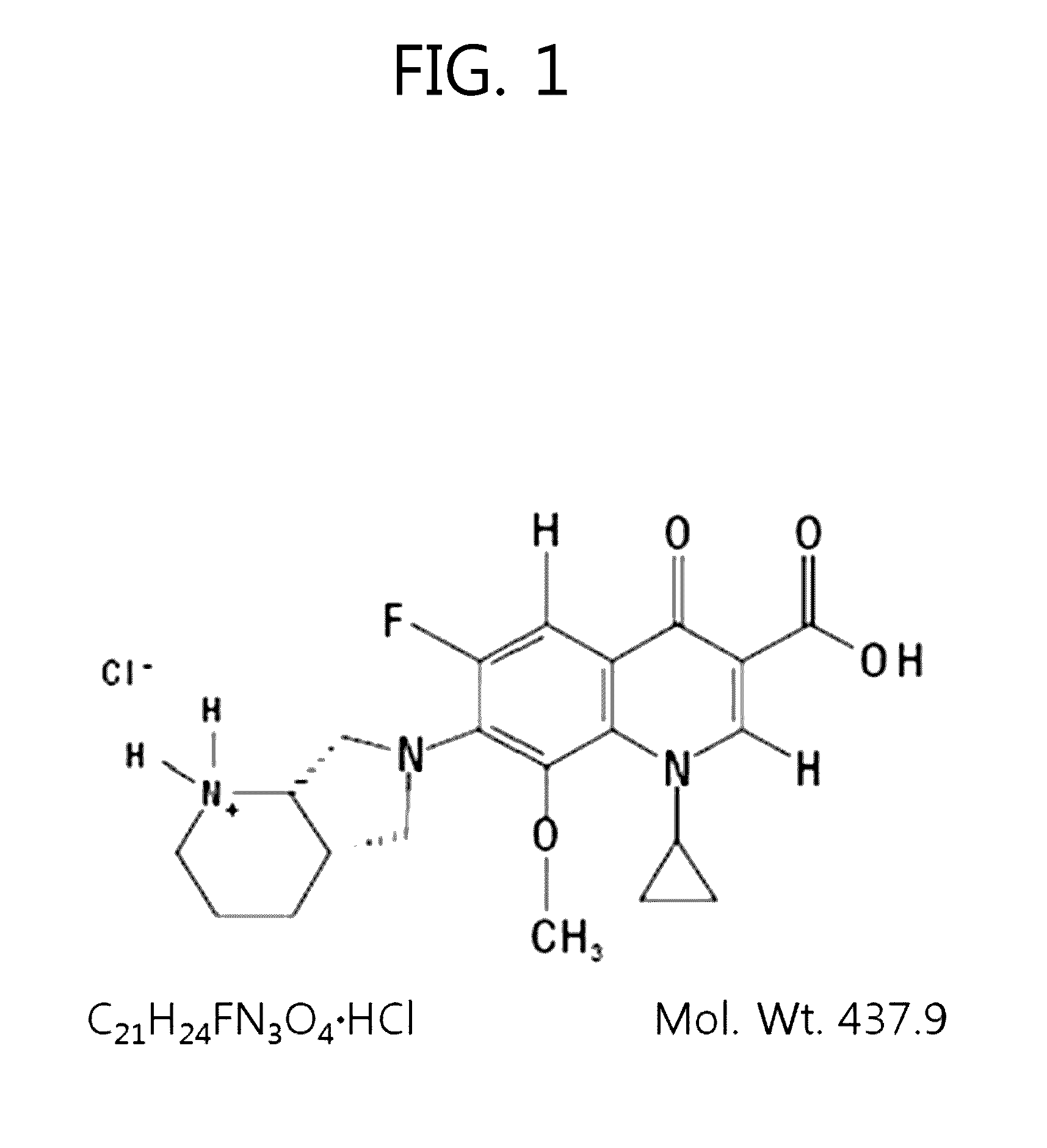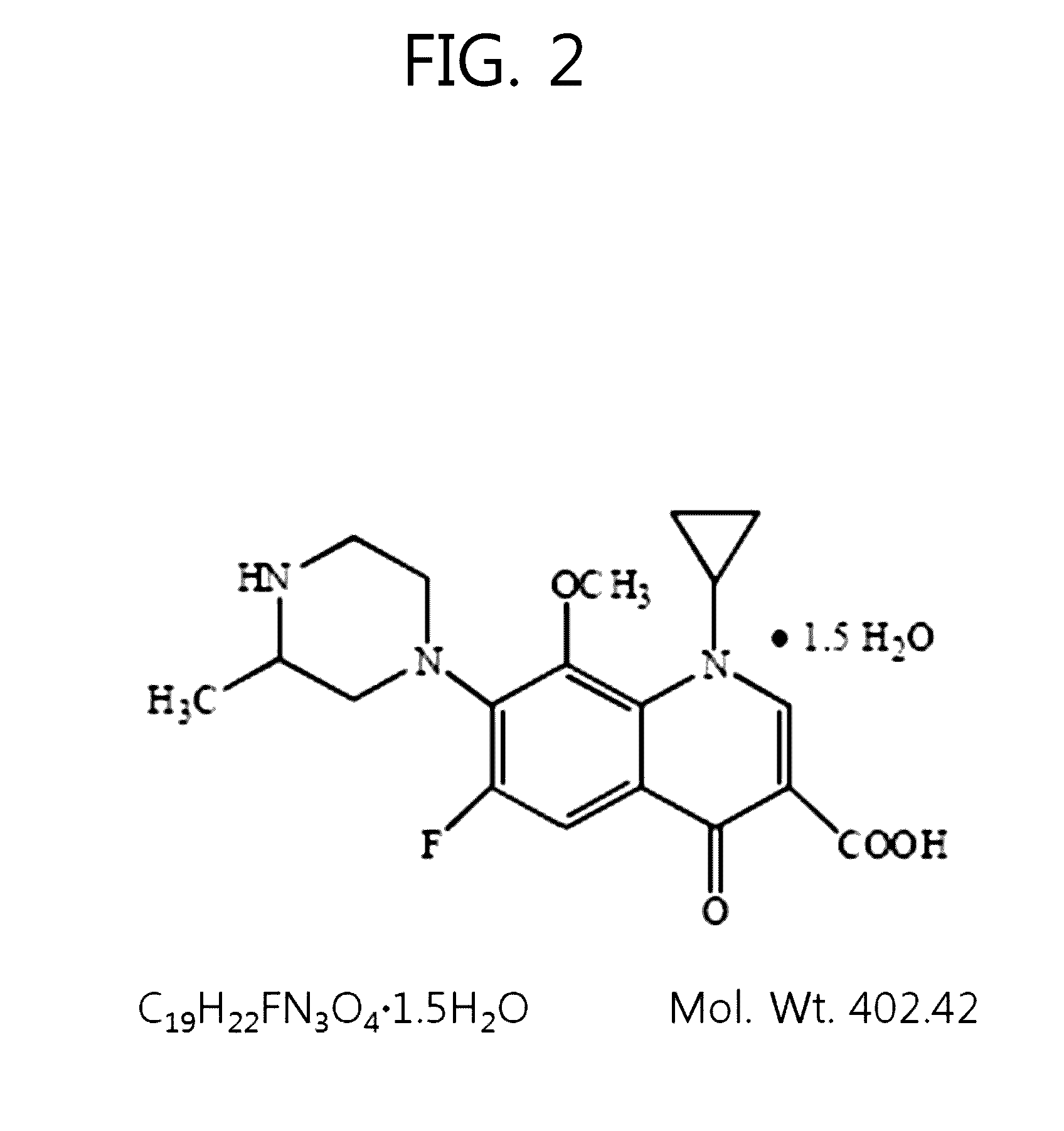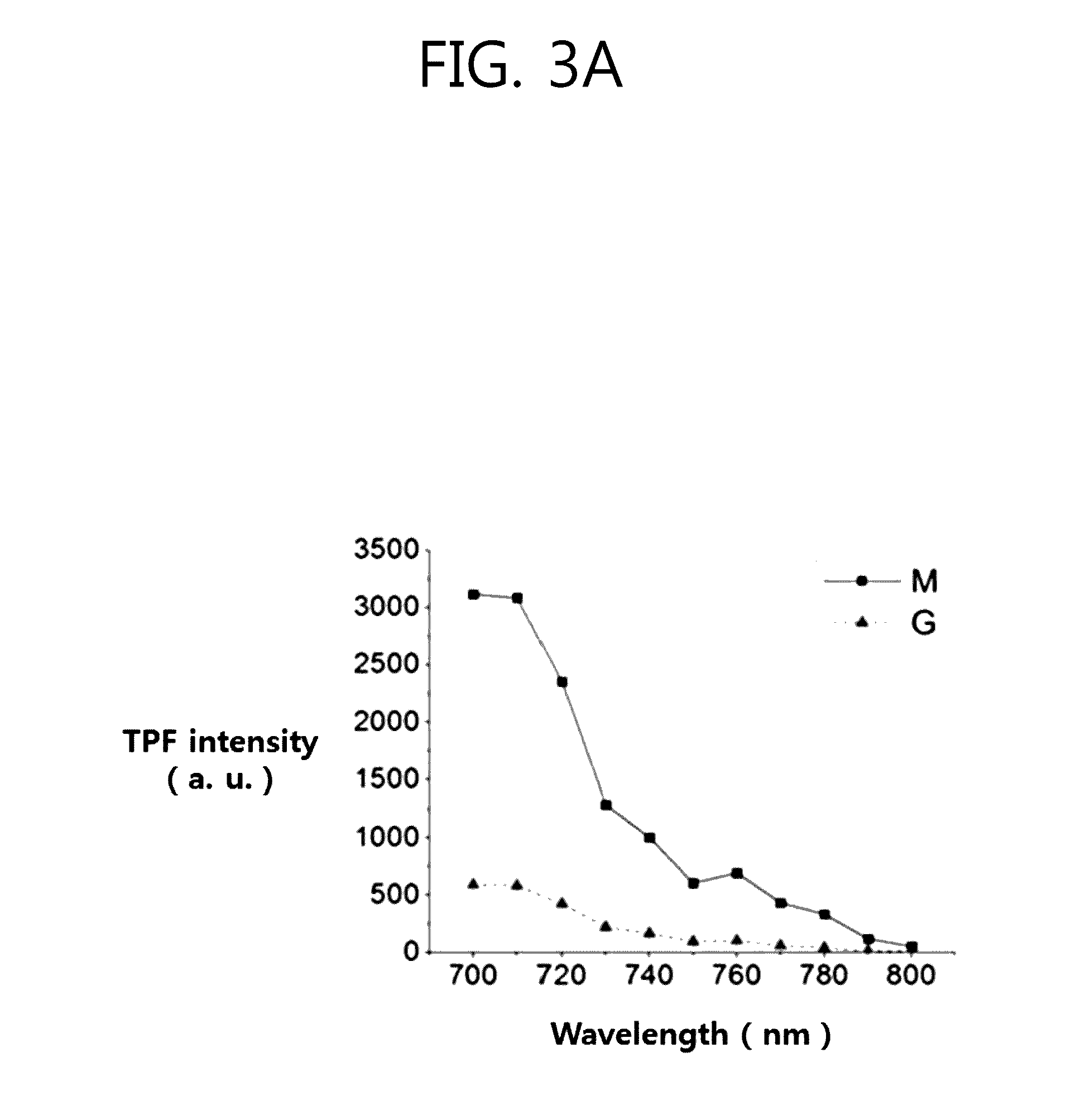Use of fluoroquinolone antibiotics
a technology of fluoroquinolone and antibiotic, applied in the field of use of fluoroquinolone antibiotics, can solve the problems of not knowing the multi-photon fluorescent characteristic, taking a long time, and no materials used for labeling cells or microorganisms
- Summary
- Abstract
- Description
- Claims
- Application Information
AI Technical Summary
Benefits of technology
Problems solved by technology
Method used
Image
Examples
experimental example 1
Measurement of Multi-Photon Fluorescence of Corneal Cells of Fluoroquinolone Antibiotics (Hydrochloride Moxifloxacin and Gatifloxacin)
[0063]1) Preparation of materials and samples
[0064]Blab / c female mice after five or six weeks, gatifloxacin, hydrochloride moxifloxacin, and a multi-photon microscope including a biaxial scanner (a galvano scanner of x axis and a galvano scanner of y axis) to be used by a point scanning method were prepared.
[0065]In this Experimental Example, a two-photon microscope using a femtosecond laser as a light source was used and the multi-photon fluorescence was equally measured under the following condition throughout an experimental process.
[0066]Excitation wavelength: 780 nm for vigamox (moxifloxacin)
[0067]Filter set: Ch01:[430 nm, Ch02:]430 nm
[0068]Manufacturer / Product name of Microscope: Leica / TCS SP5II MP SMD FLIM
[0069]Filter: 500 / 25 bandpass filter, chroma
[0070]Light source: chameleon vision II, coherent
[0071]Camera: photon multiplier tube (PMT) 6357,...
experimental example 2
Measurement of Multi-Photon Fluorescence in Skin Cells of Hydrochloride Moxifloxacin
[0088]1) Preparation of Materials and Samples
[0089]Blab / c female mice after five or six weeks, hydrochloride moxifloxacin, and a two-photon microscope including a biaxial scanner (a galvano scanner of x axis and a galvano scanner of y axis) to be photographed by a point scanning method, a scotch tape, a PBS were prepared.
[0090]In this Experimental Example, a two-photon microscope using a femtosecond laser as a light source was used and the multi-photon fluorescence was equally measured under the following condition throughout an experimental process.
[0091]Excitation wavelength: 780 nm for vigamox (moxifloxacin)
[0092]Filter set: Ch01: [490 nm, Ch02: ]490 nm
[0093]Light source: Chameleon Ultra II, Coherent
[0094]Camera: photomultiplier tube (PMT) H7421-40P, Hamamatsu Photonics
[0095]Objective lens: 20×1.0 NA objective lens, XLUMPIanFL, Olympus
[0096]Photographing area: 300 μm×300 μm (512×512 pixels)
[0097]M...
experimental example 3
Measurement of Multi-Photon Fluorescence in Bladder Cells of Hydrochloride Moxifloxacin
[0104]1) Preparation of Materials and Samples
[0105]Hydrochloride moxifloxacin, a rat (normal), a vigamox eye drop (hydrochloride moxifloxacin), an anesthetics, a warmer, a slide glass, a forcep, a PBS, and a two-photon microscope including a biaxial scanner (a galvano scanner of x axis and a galvano scanner of y axis) to be used by a point scanning method for measuring the multi-photon fluorescence expression degree were prepared.
[0106]In this Experimental Example, the used vigamox and the two-photon microscope using a femtosecond laser as a light source were measured under the following specification condition throughout an experimental process.
[0107]Excitation wavelength: 780 nm for vigamox (moxifloxacin)
[0108]Filter set: Ch01: [490 nm, Ch02: ]490 nm
[0109]Light source: Chameleon Ultra II, Coherent
[0110]Camera: photomultiplier tube (PMT) H7421-40P, Hamamatsu Photonics
[0111]Objective lens: 20×1.0 ...
PUM
 Login to View More
Login to View More Abstract
Description
Claims
Application Information
 Login to View More
Login to View More - R&D
- Intellectual Property
- Life Sciences
- Materials
- Tech Scout
- Unparalleled Data Quality
- Higher Quality Content
- 60% Fewer Hallucinations
Browse by: Latest US Patents, China's latest patents, Technical Efficacy Thesaurus, Application Domain, Technology Topic, Popular Technical Reports.
© 2025 PatSnap. All rights reserved.Legal|Privacy policy|Modern Slavery Act Transparency Statement|Sitemap|About US| Contact US: help@patsnap.com



